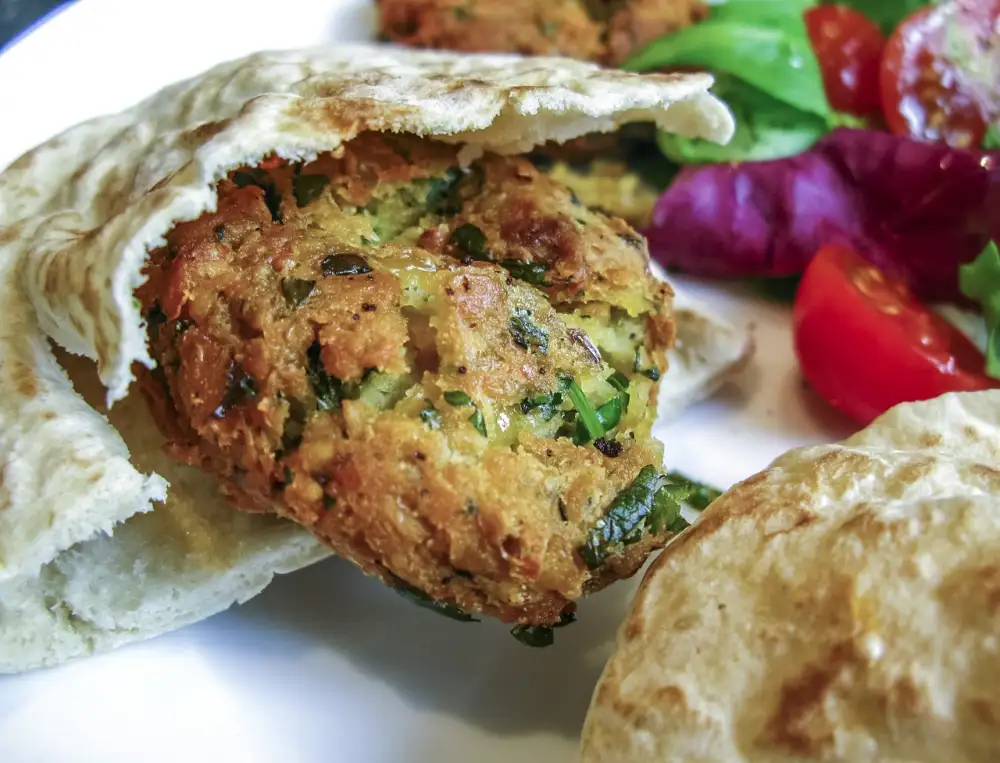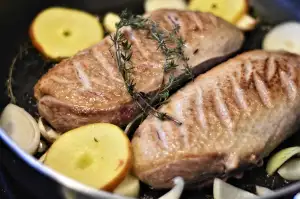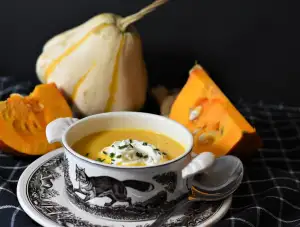Unveiling the Delights of Pitta Bread: A Journey into the World of Savory Flatbreads

- History and Origins of Pitta Bread
- Ingredients Used in Pitta Bread
- Traditional Methods of Making Pitta Bread
- Variations and Flavors of Pitta Bread
- Serving Suggestions and Pairings with Pitta Bread
- Health Benefits of Pitta Bread
- Popular Dishes and Recipes Using Pitta Bread
- Tips for Buying and Storing Pitta Bread
Pitta bread, also known as Arabic bread or Syrian bread, is a versatile and delicious flatbread that has been enjoyed for centuries. With its unique pocket-like structure, pitta bread is perfect for stuffing with a variety of fillings or dipping into flavorful sauces. Whether you're a fan of Mediterranean cuisine or simply looking to explore new culinary horizons, pitta bread is sure to delight your taste buds and add a touch of authenticity to your meals. Join us on a journey into the world of savory flatbreads as we unveil the delights of pitta bread.
History and Origins of Pitta Bread
Pitta bread, also known as Arabic bread or Syrian bread, has a rich history and fascinating origins. It is believed to have originated in the Middle East, specifically in ancient Mesopotamia, which is modern-day Iraq. The exact timeline of its creation is unclear, but it is thought to date back thousands of years.
The word "pitta" comes from the Greek word "pēktos," meaning "solid" or "clotted." This refers to the unique pocket-like structure that forms when the bread is baked. The hollow center allows for easy filling and makes pitta bread perfect for sandwiches and wraps.
Pitta bread was traditionally made by nomadic tribes who traveled across the desert regions of the Middle East. They would carry a portable oven called a tannour, which was used to bake the bread on hot stones or clay surfaces. This method allowed them to create a quick and convenient source of sustenance during their journeys.
Over time, pitta bread spread throughout the Mediterranean region and became an integral part of various cuisines. It gained popularity in countries such as Greece, Turkey, Lebanon, and Egypt. Each region added its own unique touch to the recipe, resulting in different flavors and variations of pitta bread.
Today, pitta bread continues to be enjoyed worldwide for its versatility and delicious taste. Its history serves as a reminder of the ingenuity and resourcefulness of ancient civilizations who created this culinary masterpiece.
Ingredients Used in Pitta Bread
The ingredients used in pitta bread are simple yet essential in creating its unique texture and flavor. The main components include flour, water, yeast, salt, and sometimes a small amount of olive oil. The type of flour used can vary, but it is typically a combination of white and whole wheat flour. This blend gives pitta bread its characteristic lightness while still providing some nutty undertones. The yeast helps the dough rise and gives the bread its airy pockets when baked. A pinch of salt adds flavor and enhances the overall taste. Some recipes also call for a drizzle of olive oil to add richness to the dough. These basic ingredients work together harmoniously to create the perfect canvas for various fillings and toppings.
Traditional Methods of Making Pitta Bread
The process of making pitta bread is an art form that has been passed down through generations. The key to achieving the perfect texture and flavor lies in the traditional methods used. The dough is typically made with a combination of flour, water, yeast, salt, and sometimes olive oil. It is then kneaded until it becomes smooth and elastic.
Once the dough has been prepared, it is left to rise for a period of time to allow the yeast to activate and create air pockets within the dough. This gives pitta bread its characteristic pocket-like shape. After the rising process, the dough is divided into small portions and rolled out into thin circles.
Traditionally, pitta bread is cooked in a hot oven or on a hot griddle. The high heat causes the dough to puff up and create a hollow center. This allows for easy filling with various ingredients such as meats, vegetables, or spreads.
The cooking time for pitta bread is relatively short, usually just a few minutes on each side until it becomes golden brown and slightly crispy. Once cooked, it is best enjoyed fresh and warm.
While modern methods may involve using machinery or pre-packaged mixes, many bakers still adhere to these traditional techniques as they believe it produces superior results. The careful attention to detail and time-honored methods ensure that each piece of pitta bread is deliciously soft and fluffy with just the right amount of chewiness.
By preserving these traditional methods of making pitta bread, we can truly appreciate the craftsmanship behind this beloved flatbread and savor its unique taste in our culinary adventures.
Variations and Flavors of Pitta Bread
Pitta bread, with its soft and fluffy texture, is a versatile canvas for various flavors and fillings. While the classic pitta bread is plain, there are numerous variations that add an extra dimension to this beloved flatbread.
One popular variation is the whole wheat pitta bread, which offers a nuttier flavor and a denser texture. It is a healthier option for those looking to incorporate more fiber into their diet.
For those who prefer a burst of flavors, there are herb-infused pitta breads available. These are made by adding herbs such as rosemary, thyme, or oregano to the dough. The result is a fragrant and aromatic flatbread that pairs perfectly with Mediterranean-inspired dishes.
Another delightful variation is the stuffed pitta bread. This involves cutting open the pitta horizontally and filling it with delicious ingredients like falafel, grilled vegetables, hummus, or even cheese and meats. The possibilities are endless when it comes to creating unique combinations that suit your taste buds.
If you have a sweet tooth, you can also find sweet versions of pitta bread. These are often sprinkled with cinnamon sugar or filled with sweet spreads like Nutella or fruit preserves. They make for a delightful treat or even a quick breakfast option.
Whether you prefer traditional plain pitta bread or want to explore the world of flavors and fillings, there's no shortage of options when it comes to this versatile flatbread. So go ahead and experiment with different variations to elevate your culinary adventures!
Serving Suggestions and Pairings with Pitta Bread
Pitta bread is not only delicious on its own, but it also serves as a versatile accompaniment to many dishes. Its soft and chewy texture makes it perfect for dipping, stuffing, or even as a base for pizzas.
One classic serving suggestion is to pair pitta bread with hummus, a creamy and flavorful dip made from chickpeas. The combination of the slightly tangy hummus with the warm and fluffy pitta bread is simply irresistible.
Another popular pairing is pitta bread with falafel, a Middle Eastern dish made from ground chickpeas or fava beans. The crispy falafel balls are often stuffed inside pitta bread along with fresh vegetables and drizzled with tahini sauce for a satisfying and wholesome meal.
For a Mediterranean-inspired meal, you can serve pitta bread alongside grilled meats such as kebabs or shawarma. The bread acts as a perfect vessel to hold the juicy meat and complement its flavors.
If you're looking for something lighter, try filling pitta bread with fresh salad ingredients like lettuce, tomatoes, cucumbers, and feta cheese. This makes for a refreshing and healthy option that can be enjoyed as a quick lunch or snack.
Lastly, don't forget about using pitta bread as a base for mini sandwiches or sliders. Fill them with your favorite ingredients like roasted vegetables, sliced deli meats, or even leftover roast chicken.
The possibilities are endless when it comes to serving suggestions and pairings with pitta bread. Get creative in your culinary adventures and explore the world of flavors that this versatile flatbread has to offer!
Health Benefits of Pitta Bread
Pitta bread not only tantalizes our taste buds but also offers several health benefits. Firstly, it is low in fat and cholesterol, making it a healthier alternative to other bread options. It is also a good source of complex carbohydrates, providing sustained energy throughout the day. Additionally, pitta bread contains dietary fiber, aiding in digestion and promoting a healthy gut. The whole wheat variety is particularly rich in vitamins and minerals like iron, magnesium, and B vitamins. Lastly, pitta bread can be a great option for those with gluten sensitivities as it is often made with gluten-free flours like chickpea or rice flour. Embrace the health benefits of pitta bread as you indulge in its delicious flavors!
Popular Dishes and Recipes Using Pitta Bread
Pitta bread is a versatile ingredient that can be used in a variety of delicious dishes. One popular option is to fill it with fresh vegetables, hummus, and falafel for a satisfying vegetarian sandwich. Another classic dish is the Greek gyro, where pitta bread is filled with tender slices of seasoned meat, tzatziki sauce, and crisp lettuce. For a Mediterranean twist, try making pitta pizzas by topping the bread with tomato sauce, cheese, and your favorite toppings before baking until crispy. Lastly, don't forget about the famous Middle Eastern dish called shawarma - thinly sliced marinated meat served in warm pitta bread with tahini sauce and pickled vegetables. These are just a few examples of the endless possibilities when it comes to using pitta bread in your culinary adventures.
Tips for Buying and Storing Pitta Bread
When it comes to buying pitta bread, freshness is key. Look for pitta bread that is soft and pliable, with no signs of dryness or cracking. Avoid any bread that feels hard or stale. It's also important to check the expiration date to ensure you're getting the freshest product.
To store pitta bread, keep it in a cool and dry place, away from direct sunlight. If you have leftover pitta bread, you can wrap it tightly in plastic wrap or place it in an airtight container to maintain its freshness. Alternatively, you can freeze pitta bread for up to three months. Just make sure to thaw it properly before using.
Remember, pitta bread is at its best when it's warm and freshly baked. So if possible, try to enjoy it soon after purchasing or baking for the most delicious experience.
In conclusion, pitta bread is a versatile and delicious addition to any culinary adventure. Its rich history and origins, along with the traditional methods of making it, add to its allure. With a wide range of flavors and variations available, pitta bread can be enjoyed in numerous ways. Whether you choose to serve it with dips, stuff it with savory fillings, or use it as a base for creative recipes, pitta bread will surely delight your taste buds. Don't forget about its health benefits too – it's a nutritious option that can be enjoyed guilt-free. So go ahead and embrace the versatility of pitta bread in your kitchen – let your culinary adventures begin!
Published: 29. 11. 2023
Category: Food



